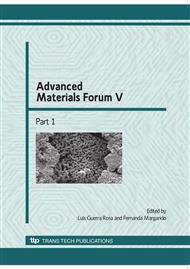p.1131
p.1137
p.1143
p.1150
p.1157
p.1165
p.1172
p.1178
p.1186
Strength Prediction and Experimental Validation of Adhesive Joints Including Polyethylene, Carbon-Epoxy and Aluminium Adherends
Abstract:
Polyolefins are especially difficult to bond due to their non-polar, non-porous and chemically inert surfaces. Acrylic adhesives used in industry are particularly suited to bond these materials, including many grades of polypropylene (PP) and polyethylene (PE), without special surface preparation. In this work, the tensile strength of single-lap PE and mixed joints bonded with an acrylic adhesive was investigated. The mixed joints included PE with aluminium (AL) or carbon fibre reinforced plastic (CFRP) substrates. The PE substrates were only cleaned with isopropanol, which assured cohesive failures. For the PE CFRP joints, three different surfaces preparations were employed for the CFRP substrates: cleaning with acetone, abrasion with 100 grit sand paper and peel-ply finishing. In the PE AL joints, the AL bonding surfaces were prepared by the following methods: cleaning with acetone, abrasion with 180 and 320 grit sand papers, grit blasting and chemical etching with chromic acid. After abrasion of the CFRP and AL substrates, the surfaces were always cleaned with acetone. The tensile strengths were compared with numerical results from ABAQUS® and a mixed mode (I+II) cohesive damage model. A good agreement was found between the experimental and numerical results, except for the PE AL joints, since the AL surface treatments were not found to be effective.
Info:
Periodical:
Pages:
1157-1164
Citation:
Online since:
January 2010
Price:
Сopyright:
© 2010 Trans Tech Publications Ltd. All Rights Reserved
Share:
Citation:


